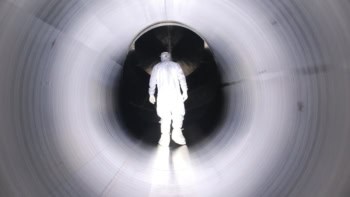The production of large numbers of antihydrogen atoms in recent years has led to renewed interest in the interactions of matter with antimatter. What happens, for instance, when a hydrogen atom meets an antihydrogen atom? In particular, can they form a molecule? The answer to this second question is a definite no according to two theoretical physicists in Germany who have derived the first analytical expression for the stability of matter-antimatter molecules (Phys. Rev. Lett. 94 223402).
Dima Gridnev and Carsten Greiner of the Institute of Theoretical Physics in Frankfurt considered systems that contain two positive particles and two negative particles interacting with each other through electrical or Coulomb forces. Starting with a proton, an antiproton, an electron and a positron, for instance, it is possible to form two stable atoms: hydrogen, which contains a proton and an electron, and antihydrogen, which contains an antiproton and a positron. However, Gridnev and Greiner show that these two atoms cannot form a molecule because there is no molecular state with an energy that is less than the combined energy of the individual atoms.
Building on an idea by the Austrian physicist Walter Thirring and using variational methods, Gridnev and Greiner showed that molecules can only form in such systems if a certain function of the four masses is greater than a particular value. They go on to show that the hydrogen-antihydrogen molecule is not stable, and that replacing the hydrogen atom with heavier isotopes (deuterium and tritium) does not make it stable either. Moreover, other exotic systems, such as muonium-antimuonium, are also unstable.
“The hydrogen-antihydrogen molecule is unstable because the proton and antiproton get too close together and are therefore seen as a neutral combination by the other particles,” Gridnev told PhysicsWeb. Instead, when hydrogen and antihydrogen meet the result is protonium (a bound state of a proton and an antiproton) and positronium (an electron-positron bound state).
“There are two nice features about the result,” Gridnev adds. “First, our result is analytical, so no numerical calculations are needed. Second, it is very easy to use – just substitute the particle masses [into the equation] and check if the system is unstable.”



